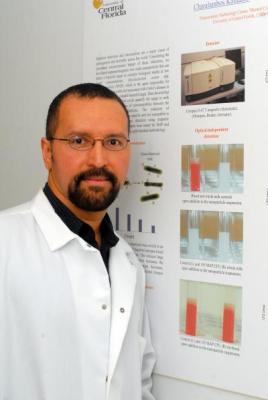A research team led by Saleh Naser and J. Manuel Perez, Professors at the University of Central Florida, has devised a new technique based on nanoparticles, paving the way to detect pathogens related to inflammatory bowel diseases such as Crohn's disease more effectively and rapidly.
 Dr. Perez works on nanotechnology at the University of Central Florida in Orlando. (Credit: UCF)
Dr. Perez works on nanotechnology at the University of Central Florida in Orlando. (Credit: UCF)
This novel method may also be utilized to detect hard-to-measure pathogens that reside deep in tissues and can bypass the immune system by reprogramming cells. In this technique, the research team coated the nanoparticles with DNA markers that are specific to the subtle pathogens. According to the team, the novel method effectively detects the presence of even trace amounts of a microbe with high accuracy.
Naser informed that within hours, the nanoparticle-based technique generated highly accurate and reliable results without compromising sensitivity and specificity. The team developed hybridizing magnetic relaxation nanosensors (hMRS) that are capable of extracting and detecting trace quantities of DNA from microbes residing in the cells of a patient. The hair-thin hMRS are made of polymer-coated iron oxide nanoparticles. They are made to specifically attach to a DNA marker that is specific to the pathogen through chemical modification.
The bonding of the hMRS to the DNA of the pathogen leads to the detection of a magnetic resonance signal; signal amplification is done by the water molecules surrounding the nanoparticles. This magnetic signature change is then read on a computer or handheld electronic devices like smartphones to identify whether the given sample is infected by a specific pathogen. The team tested its technique using a pathogen called Mycobacterium avium spp. Paratuberculosis that causes Crohn's disease in humans and Johne's disease in cattle.